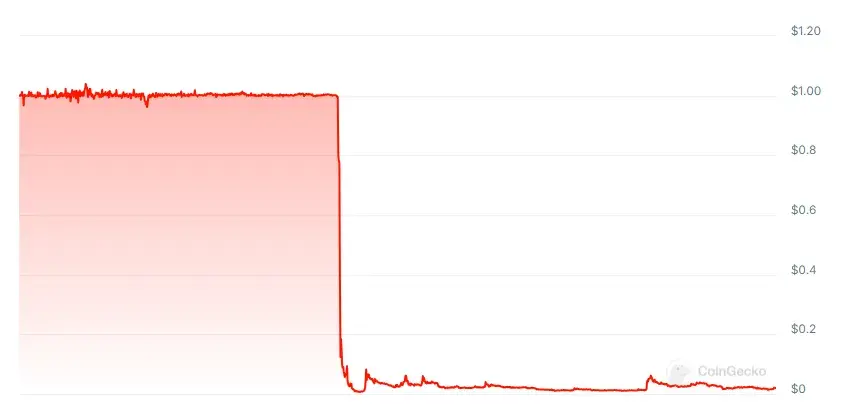Value Investment in the Crypto World: Betting on Products That Generate Stable Profits
Original Title: “Crypto value investing”
Author: Octoshi
Compilation: Deep Tide TechFlow

What is value investing?
As the name suggests, value investing is an investment strategy focused on acquiring undervalued assets whose intrinsic value is higher than the current market price.
Value investing is often combined with fundamental analysis, typically focusing on the following characteristics:
Price below book value: Stocks with a market price lower than their book value.
Significant margin of safety: The difference between intrinsic value and market price, providing protection against valuation errors.
Low price-to-earnings ratio: A price-to-earnings (P/E) ratio lower than the industry or overall market level.
Financial stability: Companies with strong balance sheets, low debt, and stable cash flows.
Competitive advantage: Companies with sustainable competitive advantages that can maintain dominance in their industry and achieve high capital returns.
In fact, Benjamin Graham is considered the father of value investing, and the world's most famous and successful investor, Warren Buffett, is his student.
Can value investing be applied to cryptocurrencies?
That's a great question; in fact, why not take a few minutes to think about it and come to your conclusion?
Although in the cryptocurrency space, we can see memecoins skyrocketing 100 times, cryptocurrencies with no real value or high fully diluted valuations (FDV) rising, and various strange phenomena, I believe that we can apply value investing in cryptocurrencies, just with some differences to be aware of. Traditional stock market value investing strategies may lead to losses in cryptocurrencies.
One of the biggest differences lies in the fundamentals and their weight. In such a rapidly changing emerging industry, growth metrics like revenue, active users, etc., carry less weight because these metrics can change quickly and may even be manipulated or influenced by temporary incentives. These incentives will eventually end, turning what seemed like fundamentally sound investments a few months ago into poor choices.
Which cryptocurrencies might be value investments?
Now that we understand the concept of value investing and know it can be applied to cryptocurrency investments, the next question is : which cryptocurrencies might be value investments?
To find the answer, let's review the characteristics of value investing and try to apply them to cryptocurrencies:
Risk-Free Value (RFV):
The first characteristic is "price below book value," which in cryptocurrencies is referred to as risk-free value (RFV).

RFV investments involve purchasing tokens whose treasury value is greater than their market cap (MC), waiting for this valuation error to be corrected. This correction can occur in various ways, such as organic growth, more people noticing the error and buying tokens to achieve a fairer valuation; through governance proposals that use part of the treasury or revenue to buy back tokens below their fair value; or through the complete shutdown of the protocol, allowing investors to exchange tokens for a corresponding portion of the treasury.
This sounds like free money, but it comes with its risks. Many times, this discount is for a reason, the most common being distrust of the team, as they may engage in a "rug pull" or neglect the community during a slow "rug," gradually depleting the treasury through salaries, budgets, or other bad practices. There is also an opportunity cost, as the waiting time may extend, causing us to miss other opportunities.
These situations have occurred many times in cryptocurrencies. Some cases I remember include ROOK, Tribe DAO, NonusDAO, Nexus Mutual, Aragon, FLOOR and NFTX. Additionally, the Patagon v. Spartacus case laid a good legal foundation, indicating that despite the youth of this industry, DAOs are not exempt from legal constraints.
Concave is a case worth exploring in depth. Its trading price has long been below book value, and they have participated in multiple seed round investments using their treasury, acquiring Fjord for $1.5 million and successfully launching it with a fully diluted valuation (FDV) of $250 million, all of which value was returned to holders. For example, throughout the bear market, you could buy CNV for less than $4, and for each token, you would receive $9 in USDC as Fjord fees, $15 in locked FJO tokens, with allocations from other seed rounds like Tapioca and Berachain still ongoing (potentially adding another $15 per token).
Arbitrage also falls into this category and typically occurs when an asset loses its peg, such as stablecoins or liquid staking/re-staking tokens trading below 1:1. Some cases I remember include crETH2, USDC, stETH, and ezETH. Each case must be analyzed individually, as we all know what happened with UST.

At the time of writing, there are some RFV opportunities, such as the GNO buyback conducted through specific wallets. We also found cases like JPGD and HEGIC, where these two tokens are significantly discounted relative to their treasury, almost 100% in ETH, so I believe they are a way to hold ETH long-term. The latest opportunity is USDR, a stablecoin trading at $0.61, backed by real estate that is in liquidation.
Interestingly, Warren Buffett started his career with this strategy. Berkshire Hathaway was once a textile company, which Warren acquired to restructure and profit from selling, but the management opposed him, so he took over the company, and the rest is history.
Margin of Safety
The aforementioned RFV can also be viewed as a margin of safety, but it doesn't necessarily require the treasury to be greater than the market cap (MC) to be considered a margin of safety. For example, if a protocol's treasury accounts for 70% of its market cap, it means that in the worst-case scenario, we would only lose 30% of our investment. Several protocols have decent treasuries, which you can check on DefiLlama, many of which even put their treasuries to work in DeFi, such as TempleDAO and ParagonsDAO.
Low Price-to-Earnings Ratio
Although there are not many, there are indeed some profitable protocols (revenue exceeding expenses), and while most will have high price-to-earnings ratios (P/E), there will be some exceptions. However, as I mentioned earlier, this metric can be manipulated or fluctuate significantly due to the changing environment of the cryptocurrency market.
Token Terminal is a great tool to start looking at this data. We can begin with the fees dashboard to see which protocols generate the most fees, but these fees may not enter the protocol, for example, Uniswap, which, despite being one of the main fee generators, currently allocates 100% of the fees to liquidity providers, which is why we have the revenue dashboard that shows the portion of fees entering the protocol, but this is still not enough, as protocols may spend a lot on incentives (expenses) to generate these fees, which is why we have the earnings dashboard that shows revenue minus incentives.

Another good tool to view all this data is Defillama's fees dashboard. If you want to go further, you also need to consider the protocol's spending on salaries, marketing, development, etc. A good tool is Defillama's expenses dashboard (thanks again to the llamas).
Considering this data, we can currently see that most L1/L2 price-to-earnings ratios are negative, while the largest dapps like AAVE, MKR, and LDO are starting to become profitable, with price-to-sales ratios (P/S) around 20-30.
But if we talk about low price-to-earnings ratios, the business that comes to mind is Rollbit, a crypto casino with a fully diluted valuation (FDV) of $232 million. If we annualize the revenue from the past 30 days, we get $342 million per year, which gives us a price-to-sales ratio (P/S) of only 0.68! If we want to know the price-to-earnings ratio (P/E), we need to deduct expenses, but Rollbit is not very transparent in this regard. Perhaps this lack of transparency, combined with some controversies and the team's lack of focus, is the reason for the discount. Personally, I believe these situations often create good buying opportunities, but please do your own research (DYOR), as revenue seems to be gradually declining:

Another one to watch is Banana Gun, a mainstream trading bot on Telegram. Despite a significant price increase after the announcement of its listing on Binance, its price-to-sales ratio (P/S) remains at 12, and it has actual revenue, products in development, and organic growth. It is still recommended to do your own research (DYOR).

Robust Finances and Competitive Advantage
Let's look at the last two characteristics of value investing. Robust finances include no debt (though this is not common in crypto, there have been cases after vulnerabilities), consistently increasing and relatively stable profitability, organic growth, and productive treasuries. Competitive advantage includes strong branding, intellectual property (e.g., Uniswap V3 protects its code), network effects, and liquidity, which enable the protocol to maintain dominance.
Lido is a great example. It is the protocol with the highest total value locked (TVL) at $33 billion vs. the second place at $15 billion, with stETH holding a market share of 29% (followed by Coinbase at 12.7%, EtherFi at 4.8%, and Binance at 3.5%). Additionally, stETH is considered the safest liquid staking token (LST), being the most liquid and most integrated in DeFi. We can see user preference for stETH in the launches of Eigenlayer or Simbiotic, with stETH filling up much faster than other LSTs. This is undoubtedly the best example of competitive advantage in DeFi, a organically created monopoly!

Aave and Uniswap also fall into this category. Aave's market share is 37%, while Uniswap is 28%. Additionally, Uniswap accounts for 52% of total trading volume in decentralized exchanges (DEXs). Both protocols are mature, have strong brands, and users feel safe when borrowing or providing liquidity. As competitive advantages increase, these protocols will improve their profit margins, for example, Uniswap charges a fee of 0.25% on its interface, although this fee currently goes to Uniswap Labs, it may change in the future.

Maker is another excellent protocol that may have the strongest financial condition, but I question its long-term competitive advantage, as other stablecoins like USDC and USDe seem to be gaining more market share.
Although this is a stock, Coinbase ($COIN) is also a good value investment with a clear competitive advantage. For example, its LST $cbTH charges a fee of 20%, the highest in the market, as Lido and Binance charge 10%. Coinbase has a wide range of products, such as its CEX, futures, staking services, its own L2, wallet, Circle, etc.
Solana can also be categorized here. Although its financial situation is poor, as inflation far exceeds the revenue generated from fees, this may be a strategy to increase market share (currently effective). Additionally, it has its own ecosystem, organic growth, real users, a very low barrier to entry, and a good user experience.
A leading protocol in Solana is Jito. It is the dapp with the highest total value locked (TVL) at $2 billion. Although JitoSOL only holds a 3% market share, as most SOL is natively staked, it holds a 48% market share in LSTs (if we apply this method, Lido holds a 71% market share). Jito's revenue appears stable and growing, although its current valuation is quite high ($2.7 billion vs. Lido's $1.9 billion), everything will depend on Solana's future.

Another Solana project I really like is Phantom, which is the default wallet with a very user-friendly interface (10/10). I believe that in the future, most people will use wallets on their phones rather than PCs, so Phantom and its mobile app have a significant advantage in this regard. Its competitive advantage may allow it to charge fees for swaps (like Metamask, Rabby, and Uniswap Wallet). Although Phantom does not have a token, I list it as a high-priority project.

Phantom Ranked First in Finance Apps on GooglePlay
It should be clarified that although I have not discussed token economics (Tokenomics), this is another important point of study. I believe that token economics that matches value investing should be simple, where most tokens are already in circulation and can bring value to token holders in various ways. Good Ponzi economics may help a project launch and gain liquidity, but in the long run, it will not be profitable; the only way to be profitable in the long term is to have a real product that generates profits.
I hope this article is useful and interesting to you; if so, please share it with more people. I write purely out of passion, with no financial interest, and if I see enough support, it will motivate me to write more articles!










